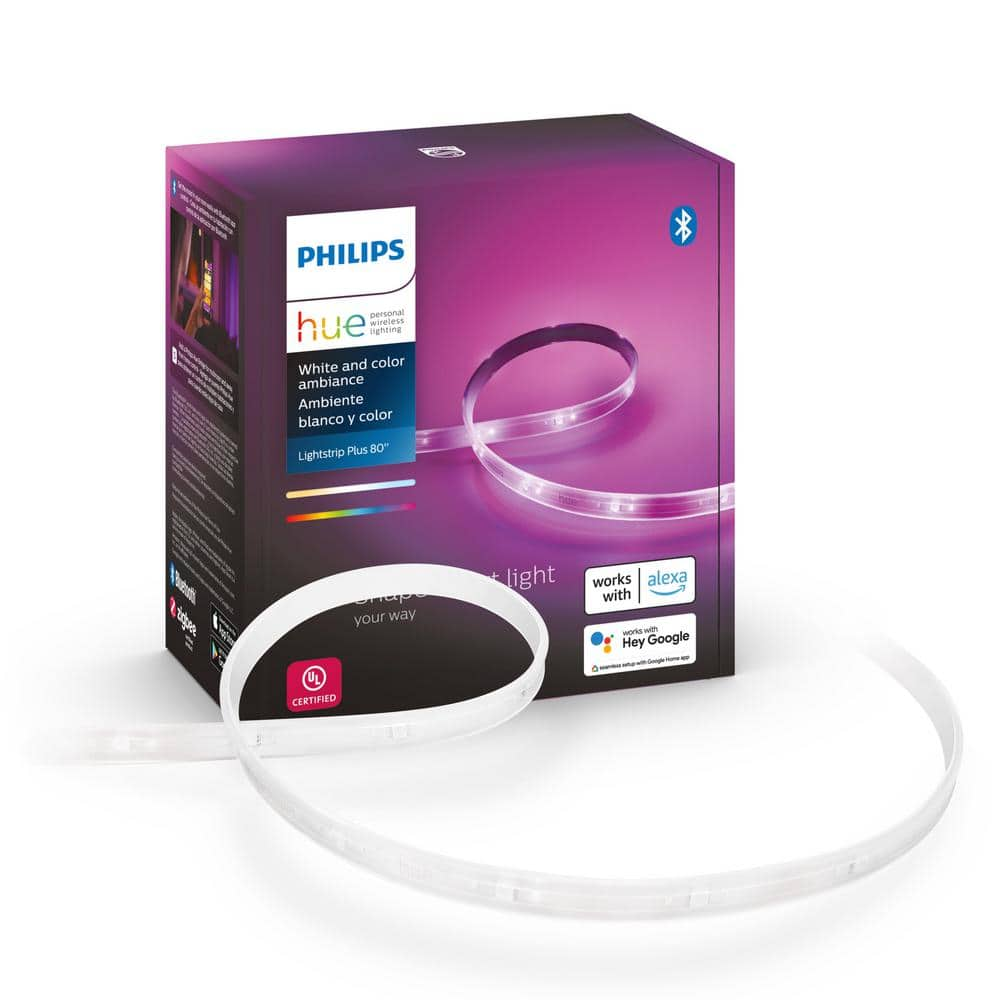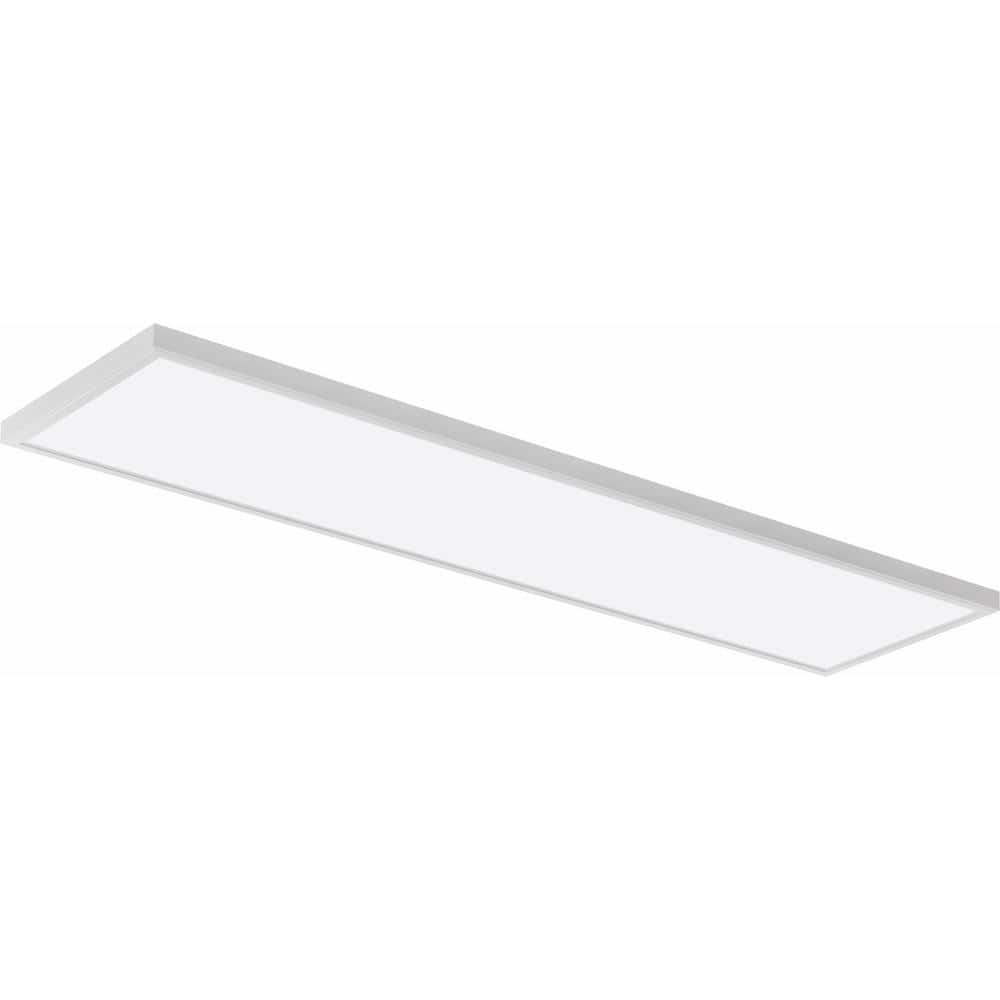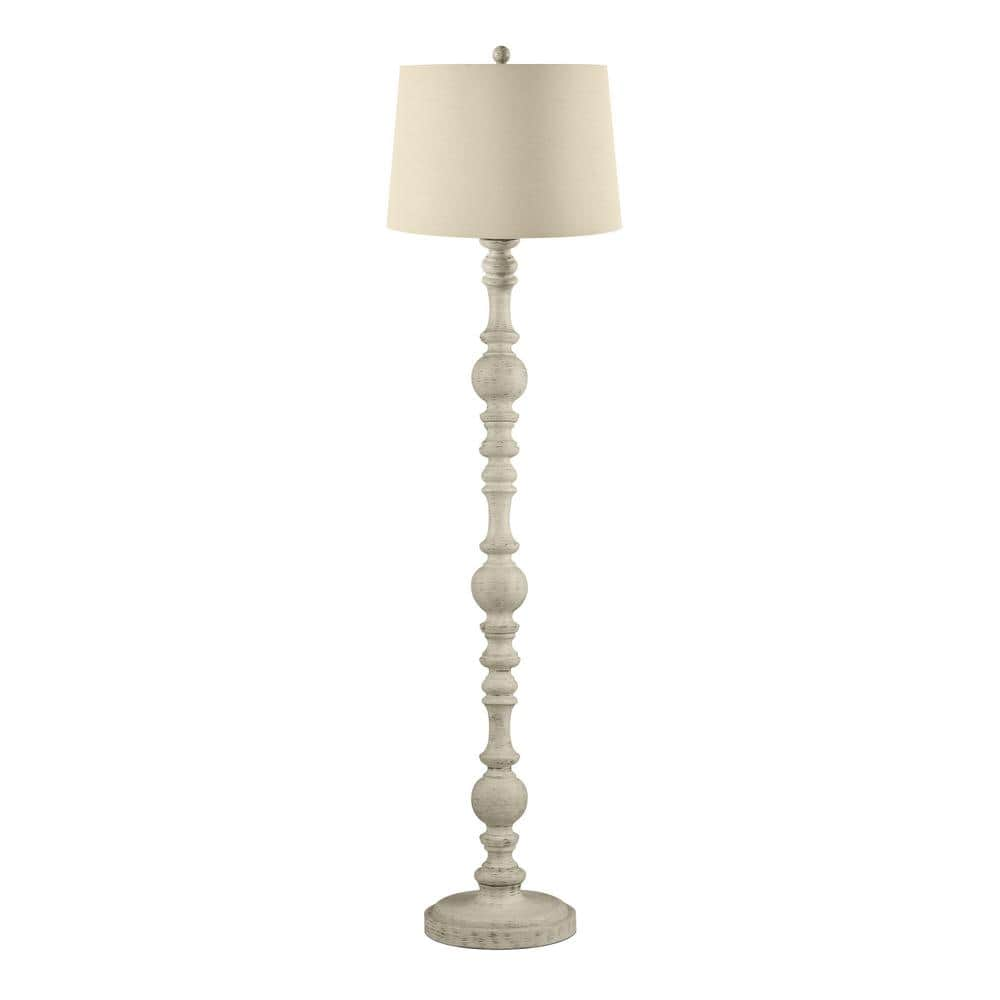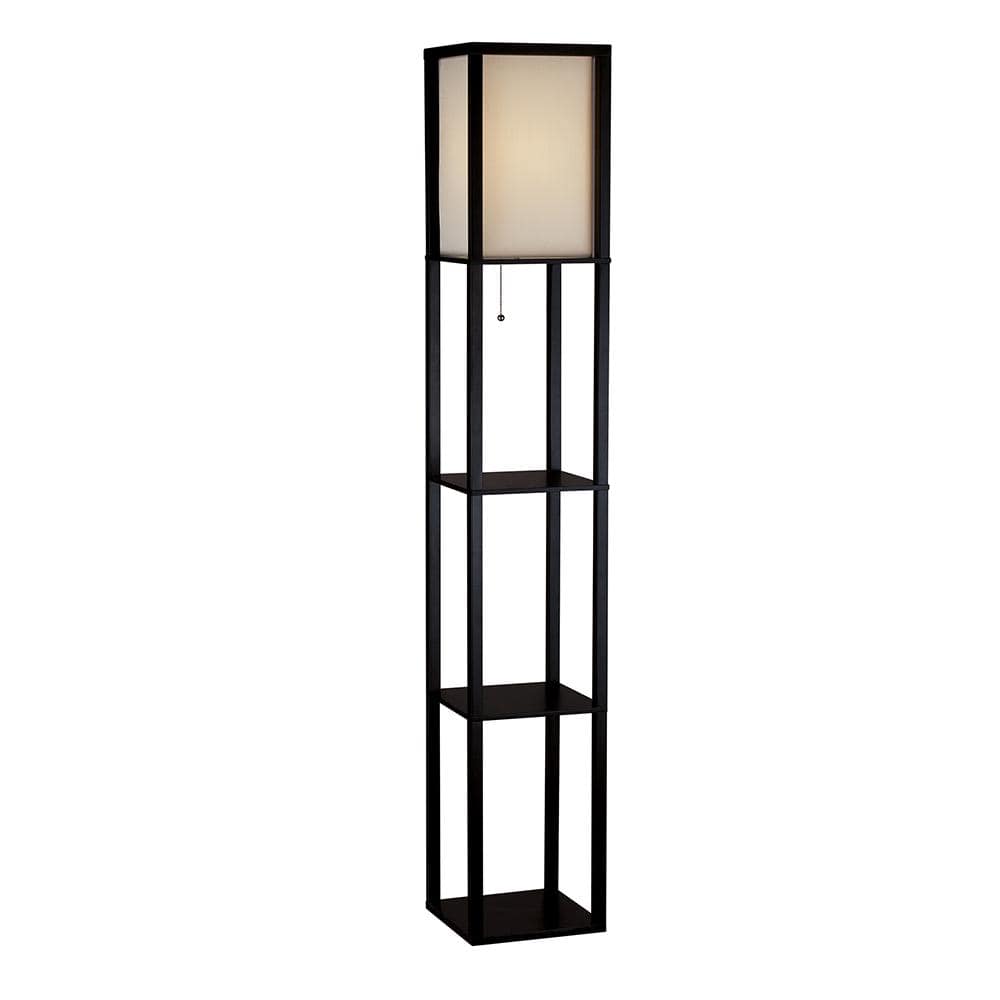Philips Hue White and Color Ambiance 6.6 ft. LED Under Cabinet Light Base Kit (1-Pack)
Bluetooth-enabled base kit with 16 million colors. Get the full suite of features with a Hue Bridge (not included). Works with Apple HomeKit, Amazon Alexa, and Google Assistant.
Get colored smart light anywhere in your home with the latest Philips Hue White and Color Ambiance Bluetooth-enabled lightstrip. This base kit includes an 80-inch white and color lightstrip, power adapter, and connector box for reattaching cut pieces (only compatible with this model). Need more length? Extend with Philips Hue Bluetooth-enabled 40-inch extensions (up to 32 feet, each sold separately). The Hue lightstrip is flexible, allowing you to bend, shape, cut, and extend it to adapt to your room and decor. Create an immersive experience with smart light by placing it under cabinets, along a bar, or behind entertainment centers. This Hue lightstrip features Bluetooth capability for instant light control in one room. Get hands-free control when you pair with a voice or smart home assistant, such as Amazon Alexa, Google Assistant, and Apple Homekit. All Bluetooth-enabled products easily connect to a Hue Bridge (sold separately) to unlock the full suite of smart lighting features like timers, routines, sync with media, and away from home control. The Hue Bridge allows you to add up to 50 lights – indoors or outside – for a full smart home experience.
- 80-inch Bluetooth-enabled lightstrip with power adapter
- Extend with the Philips Hue Bluetooth-enabled lightstrip extensions up to 32 feet
- Bring brilliantly colored light to any area of your home with the flexible Lightstrip
- Set the mood in your room with the Philips Hue Bluetooth app
- Add the Philips Hue bridge to unlock more features
- Cut and extend to your liking
- High light output: 1600 lumen
- Backed by a 2-year limited Philips warranty
Additional information
| Product Length (ft.) | 6.55 |
|---|---|
| Product Length (in.) | 78.7 |
| Certifications and Listings | UL Listed |
| Manufacturer Warranty | 2 Year Warranty |






by Kenneth
These work very well, and connection from the app via Bluetooth was very simple. The downside is that for the high price, you only get very short lengths, so if you have a large area to cover, you’re going to pay a lot for enough strips.
by Gast
I’ve used the strips for above and under the counter lighting, and they are awesome! Worth every penny.
by Bax
Good instructions, easy to install.
by Munoz
Great product, simple to install and simple to configure.